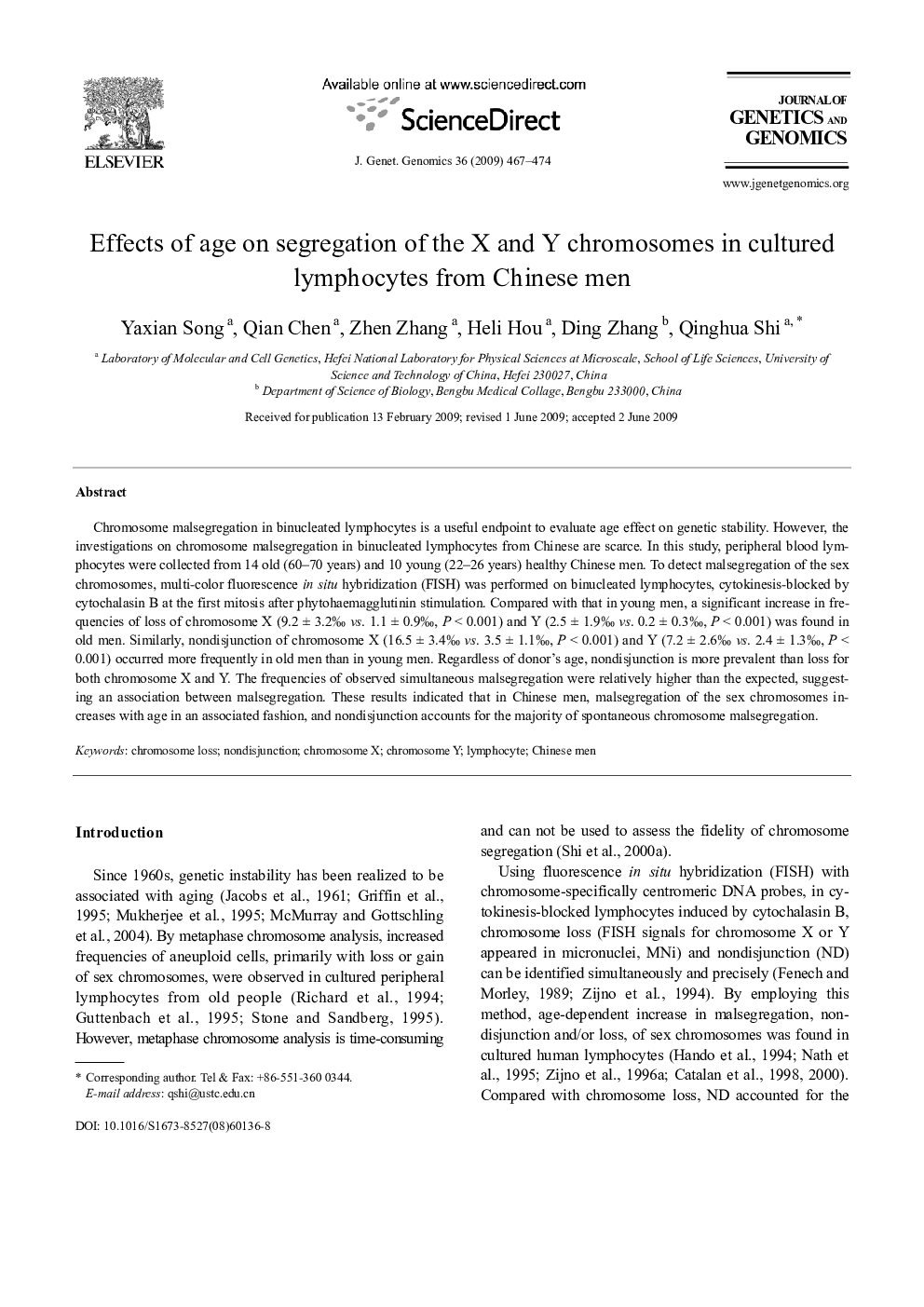| Article ID | Journal | Published Year | Pages | File Type |
|---|---|---|---|---|
| 2787716 | Journal of Genetics and Genomics | 2009 | 8 Pages |
Chromosome malsegregation in binucleated lymphocytes is a useful endpoint to evaluate age effect on genetic stability. However, theinvestigations on chromosome malsegregation in binucleated lymphocytes from Chinese are scarce. In this study, peripheral blood lymphocytes were collected from 14 old (60–70 years) and 10 young (22–26 years) healthy Chinese men. To detect malsegregation of the sexchromosomes, multi-color fluorescence in situ hybridization (FISH) was performed on binucleated lymphocytes, cytokinesis-blocked bycytochalasin B at the first mitosis after phytohaemagglutinin stimulation. Compared with that in young men, a significant increase in frequencies of loss of chromosome X (9.2 ± 3.2‰ vs. 1.1 ± 0.9‰, P < 0.001) and Y (2.5 ± 1.9‰ vs. 0.2 ± 0.3‰, P < 0.001) was found inold men. Similarly, nondisjunction of chromosome X (16.5 ± 3.4‰ vs. 3.5 ± 1.1‰, P < 0.001) and Y (7.2 ± 2.6‰ vs. 2.4 ± 1.3‰, P < 0.001) occurred more frequently in old men than in young men. Regardless of donor's age, nondisjunction is more prevalent than loss forboth chromosome X and Y. The frequencies of observed simultaneous malsegregation were relatively higher than the expected, suggesting an association between malsegregation. These results indicated that in Chinese men, malsegregation of the sex chromosomes increases with age in an associated fashion, and nondisjunction accounts for the majority of spontaneous chromosome malsegregation.
